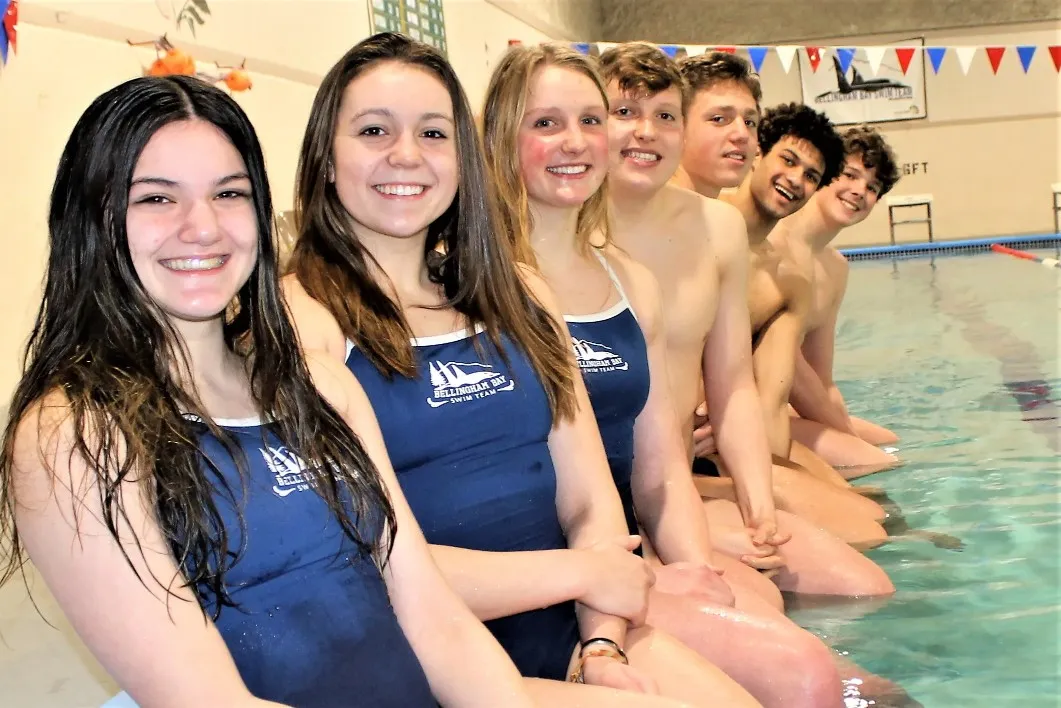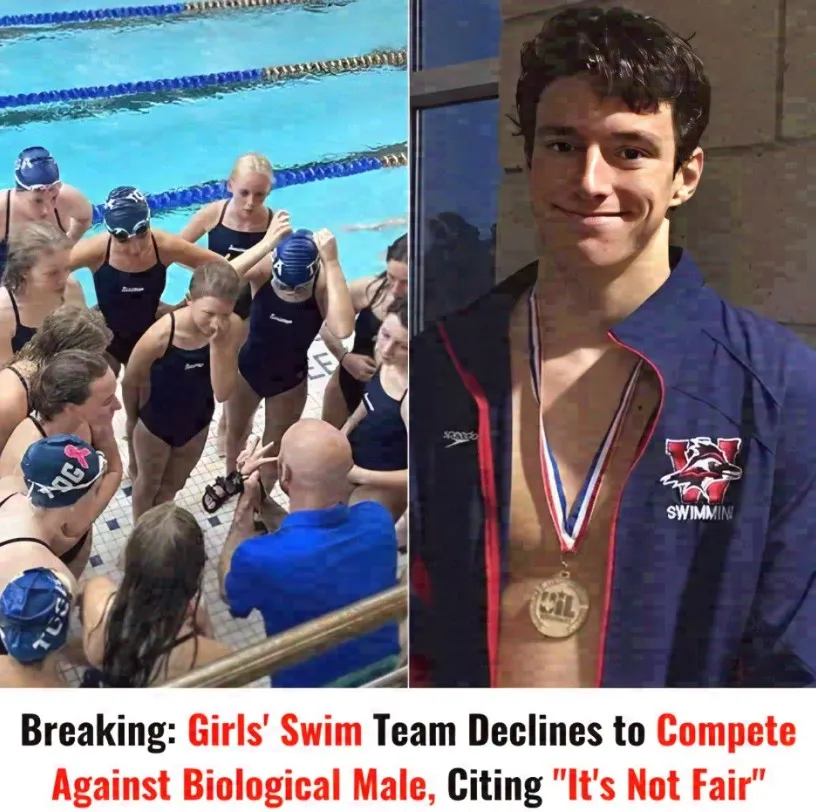
A recent decision by a high school girls’ swim team to opt out of competing in a scheduled meet has sparked intense nationwide debate, drawing attention to the ongoing conversation around inclusion, fairness, and evolving athletic policies in school sports.
The swimmers, who released a joint statement, cited concerns about what they perceive as an uneven playing field in the upcoming competition, where an athlete who is transgender was set to compete in the girls’ category. While the decision has generated both support and criticism, it underscores the broader cultural and policy challenges that educational institutions and sports organizations face today.
A Team’s Decision Sparks National Attention

The swim team’s announcement came just days before a regional competition. The students, who have trained rigorously for years, stated they felt the integrity of the sport was at stake. In their collective message, they emphasized that their action was not one of exclusion, but a stand for what they see as fairness in athletic competition.
“We respect all athletes,” the team’s statement read. “But fairness in sport matters. We believe that every competitor deserves a level playing field.”
The situation escalated into a national headline, drawing responses from school administrators, parents, advocacy groups, legal experts, and public officials. As the news spread, it reignited debates already taking place across the U.S. about the participation of transgender athletes in school and collegiate sports.
The Broader Debate: Fairness vs. Inclusion

At the heart of the matter is the ongoing challenge of balancing fairness with inclusivity. Some advocates for girls’ and women’s sports argue that biological differences can impact performance in competitive settings, even when transgender athletes follow hormone therapy or meet current eligibility guidelines.
These groups are not necessarily opposed to transgender participation, but rather question the structures that govern eligibility and fairness. In their view, existing frameworks may not adequately account for the biological advantages retained by transgender athletes who transitioned after puberty.
“This is not about discrimination,” said one parent of a team member. “It’s about ensuring that competition remains fair for everyone involved—especially for girls who’ve worked tirelessly to compete on equal footing.”
On the other side of the discussion are LGBTQ+ advocates and allies who argue that denying transgender athletes the ability to compete in alignment with their gender identity is itself a form of exclusion. They stress that participation in sports is critical for the well-being, social development, and mental health of all students—including those who are transgender.
“Transgender students deserve the same opportunities to learn, grow, and compete,” said a representative from a national inclusion advocacy organization. “We need to ensure that all athletes feel safe and welcome in school environments.”
The Legal Landscape: A Patchwork of Policies

This controversy is not isolated. Across the United States, several states have introduced or passed legislation aimed at regulating how transgender athletes participate in school and collegiate sports.
Some states have enacted laws that restrict athletes to teams based on their sex assigned at birth, while others have expanded protections for transgender youth. The result is a patchwork of policies that vary widely from one jurisdiction to another.
Meanwhile, governing bodies like the NCAA and the U.S. Department of Education have also begun revisiting their policies to ensure they reflect both scientific understanding and evolving social values.
In recent years, the NCAA has implemented a sport-by-sport policy that defers to national governing bodies and sets hormone-related requirements for transgender athletes. However, critics argue that more clarity and consistency are needed to reduce confusion and protect the rights and expectations of all student-athletes.
Legal experts warn that the continued lack of national uniformity could lead to a growing number of lawsuits as students, families, and schools seek judicial guidance.
Cultural Impact: A Mirror of Broader Social Shifts

The current situation involving the swim team reflects deeper cultural currents in America today. As conversations around gender identity evolve, so too do public attitudes toward participation, inclusion, and equity.
For many, the question isn’t simply about swimming or winning medals—it’s about how society defines fairness, opportunity, and identity. This case, though specific in scope, represents a broader moment of transition for educational and sports institutions navigating changing societal norms.
What’s Next for the Team—and for Policy?
As of now, the swim team’s decision has not resulted in official disciplinary action, but it has opened the door to wider school board discussions and potential policy reviews. The local district has confirmed that it is working to engage with all students and stakeholders involved, emphasizing its commitment to respect, inclusion, and dialogue.
“We are committed to supporting every student,” a district spokesperson stated. “This includes ensuring fair competition, honoring student voices, and fostering inclusive environments.”
At the national level, lawmakers, educators, and sports officials continue to grapple with how to set policies that address the needs and rights of all athletes without causing harm or creating division. Some experts suggest forming open forums or community panels to hear directly from athletes, parents, and experts in both medicine and ethics.
The Way Forward: Bridging Divides with Dialogue
No matter where one stands on the issue, the incident has prompted a crucial conversation. Sports have long been a reflection of broader society—and in many ways, they serve as a testing ground for new norms, values, and definitions of equality.
As schools and sports organizations continue to navigate these uncharted waters, the emphasis must remain on listening to all voices—those advocating for fairness, those fighting for inclusion, and those simply trying to play the sport they love.
The story of this swim team may not provide easy answers, but it does underscore the importance of thoughtful policy, empathetic leadership, and respectful dialogue in shaping the future of athletics in America.


